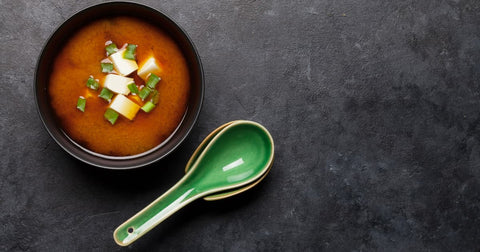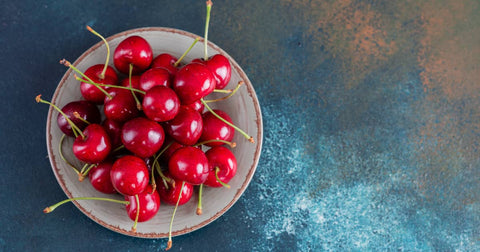Kombucha, the fizzy, fermented tea drink, has taken the wellness world by storm. Packed with probiotics and boasting a refreshing tang, it's a popular choice for those seeking to improve their gut health. But if you're venturing into the world of home-brewed kombucha, you'll inevitably encounter a mysterious ingredient: the SCOBY.

This article will demystify the SCOBY, explore its role in kombucha brewing, and guide you through the process of making your own kombucha at home.
What is a SCOBY?
SCOBY stands for Symbiotic Culture Of Bacteria and Yeast. It's a living colony of bacteria and yeast that's essential for fermenting sweet tea into kombucha.
Think of it as the "mother" of your kombucha, a pancake-like blob that transforms sugary tea into a tangy, probiotic-rich beverage.
What is SCOBY Made Of?
A SCOBY is a cellulose matrix created by the bacteria and yeast during fermentation. It has a rubbery, gelatinous texture and might appear white, cream-colored, or even slightly brown.
SCOBY Meaning: Decoding the Acronym
The term "symbiotic" highlights the cooperative relationship between the bacteria and yeast within the SCOBY. They work together to ferment the tea, producing the characteristic flavor and health benefits of kombucha.
SCOBY for Kombucha: The Fermentation Catalyst

The SCOBY is the heart of kombucha brewing. It contains the necessary microorganisms to convert sweet tea into a tangy, probiotic-rich drink.
During fermentation, the bacteria and yeast in the SCOBY consume the sugar in the tea and produce:
-
Organic acids: Give kombucha its tangy flavor.
-
Probiotics: Beneficial bacteria that support gut health.
-
Carbon dioxide: Creates the fizziness.
-
Trace amounts of alcohol: A natural byproduct of fermentation.
How to Make Kombucha SCOBY: Growing Your Own
While you can purchase a SCOBY online or from a kombucha brewer, it's also possible to grow your own from scratch using a bottle of unflavored, unpasteurized kombucha. This process takes a few weeks and requires patience, but it can be a rewarding experience.
Here's a step-by-step guide to growing your own SCOBY:
1. Gather your supplies:
- 1 cup of unflavored, unpasteurized kombucha (look for "the mother" in the bottle)
- 7 cups of water
- 1 cup of white sugar
- 4 black tea bags or 2 tablespoons of loose leaf black tea
- 1-gallon glass jar
- Tightly woven cloth (like cheesecloth)
- Rubber band
2. Brew the sweet tea:

- Bring the water to a boil in a pot.
- Remove from heat and add the sugar, stirring until dissolved.
- Add the tea bags or loose leaf tea and steep for 10-15 minutes.
- Remove the tea bags or strain the tea leaves.
- Let the sweet tea cool completely to room temperature.
3. Combine the tea and kombucha:
- Pour the cooled sweet tea into the 1-gallon glass jar.
- Add the unflavored, unpasteurized kombucha to the jar.
4. Cover and ferment:
- Cover the jar with the tightly woven cloth and secure it with a rubber band.
- Place the jar in a warm, dark place, away from direct sunlight. The ideal temperature is between 70-80°F (21-27°C).
- Allow the mixture to ferment for 2-4 weeks.
5. Observe the SCOBY formation:
- During the first week, you might notice a thin, cloudy layer forming on the surface of the tea. This is the beginning of your SCOBY.
- Over the next few weeks, the layer will thicken and become more opaque, eventually forming a solid, rubbery disk.
6. Your SCOBY is ready:
- Once the SCOBY is about 1/4 inch thick, it's ready to use for brewing kombucha. You can now use this SCOBY and some of the starter liquid (the fermented tea) to make your own kombucha at home.
Tips for Growing a Healthy SCOBY:

-
Use high-quality, organic ingredients.
-
Ensure the jar and all utensils are clean and sterilized to prevent contamination.
-
Be patient! Growing a SCOBY takes time, and it's normal for it to take a few weeks.
-
Avoid disturbing the jar during fermentation.
-
If you notice any mold or unusual smells, discard the batch and start again.
Growing your own SCOBY can be a rewarding experience, allowing you to create your own probiotic-rich kombucha at home.
Making Kombucha at Home: A Step-by-Step Guide
Once you have a SCOBY, you can start brewing kombucha at home. Here's a simplified process:
-
Brew sweet tea: Steep black or green tea bags in hot water with sugar.
-
Cool the tea: Allow the tea to cool completely.
-
Add the SCOBY and starter liquid: Place the SCOBY and some starter liquid (kombucha from a previous batch) in a clean glass jar.
-
Ferment: Cover the jar with a cloth and let it ferment at room temperature for 7-30 days, depending on your preference.
-
Flavor and bottle: Once fermented, you can flavor your kombucha with fruits, herbs, or spices. Bottle it and let it undergo a second fermentation for a few days to increase carbonation.
Food Intolerance and Gut Health
If you're experiencing digestive issues, even after consuming probiotic-rich foods like kombucha, consider the possibility of food intolerances or sensitivities. These can disrupt your gut microbiome and contribute to various symptoms.
Food Sensitivity Testing: Uncover Your Triggers
A food sensitivity test kit can help you identify specific foods that might be triggering your symptoms. By eliminating or reducing these trigger foods, you can support a healthy gut microbiome and improve your overall well-being.

Key Takeaways:
-
A SCOBY is a living colony of bacteria and yeast essential for fermenting kombucha.
-
You can purchase a SCOBY or grow your own from scratch.
-
Making kombucha at home involves brewing sweet tea, adding the SCOBY and starter liquid, and allowing it to ferment.
-
Food intolerances can impact gut health, and a food sensitivity test can help identify triggers.
Disclaimer: This article is intended for informational purposes only and should not be considered a substitute for professional medical advice. If you have any concerns about your health or kombucha consumption, consult a qualified healthcare professional.
Frequently Asked Questions:
1. What does a healthy SCOBY look like?
A healthy SCOBY is typically a pale white or cream-colored, gelatinous disk that floats on the surface of the kombucha. It might have some brown spots or streaks, which are usually harmless. Avoid using a SCOBY that has fuzzy black or green mold, an off-putting smell, or any signs of contamination.
2. Can I use any type of kombucha to grow a SCOBY?
It's best to use unflavored, unpasteurized kombucha to grow a SCOBY. Flavored or pasteurized kombucha might contain ingredients or additives that could hinder the growth of the SCOBY.
3. How long can I store a SCOBY?
A SCOBY can be stored in a jar of starter tea (kombucha) in the refrigerator for several months. It's essential to keep it submerged in the liquid and change the starter tea every few weeks to keep it healthy.
4. Can I use a SCOBY more than once?
Yes, a SCOBY can be used multiple times to brew kombucha. With each batch, it will typically grow thicker. You can even peel off layers of the SCOBY to share with friends or start new batches of kombucha.
5. I'm experiencing digestive issues, but I'm not sure if kombucha is the right solution for me. What should I do?
If you have concerns about your digestive health, consult your doctor or a registered dietitian. They can help you determine if kombucha is a suitable addition to your diet and recommend other strategies for improving your gut health. You might also consider a food sensitivity test to identify any potential food intolerances that could be contributing to your digestive problems.


.png?v=1737390083)
.png?v=1737187409)


